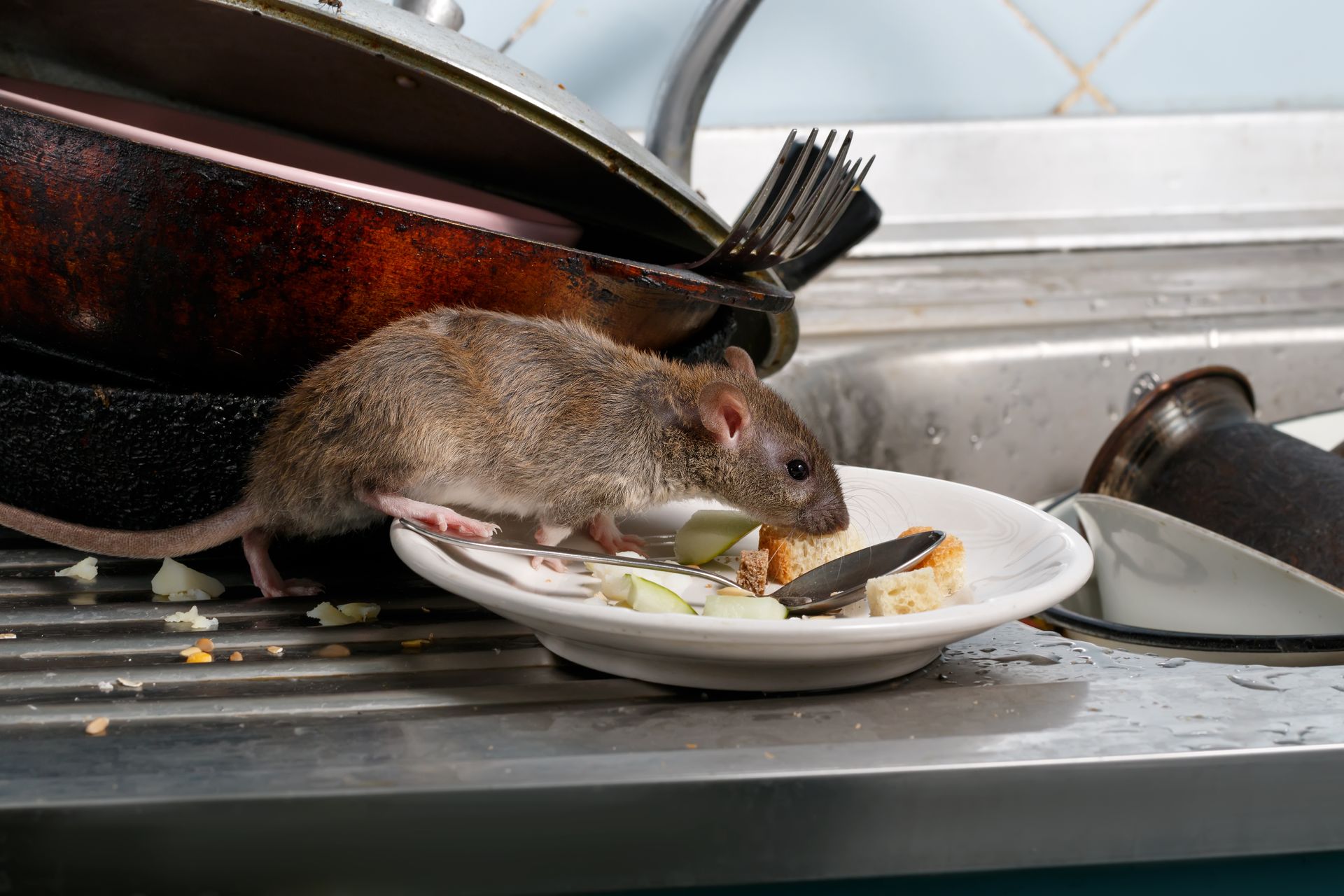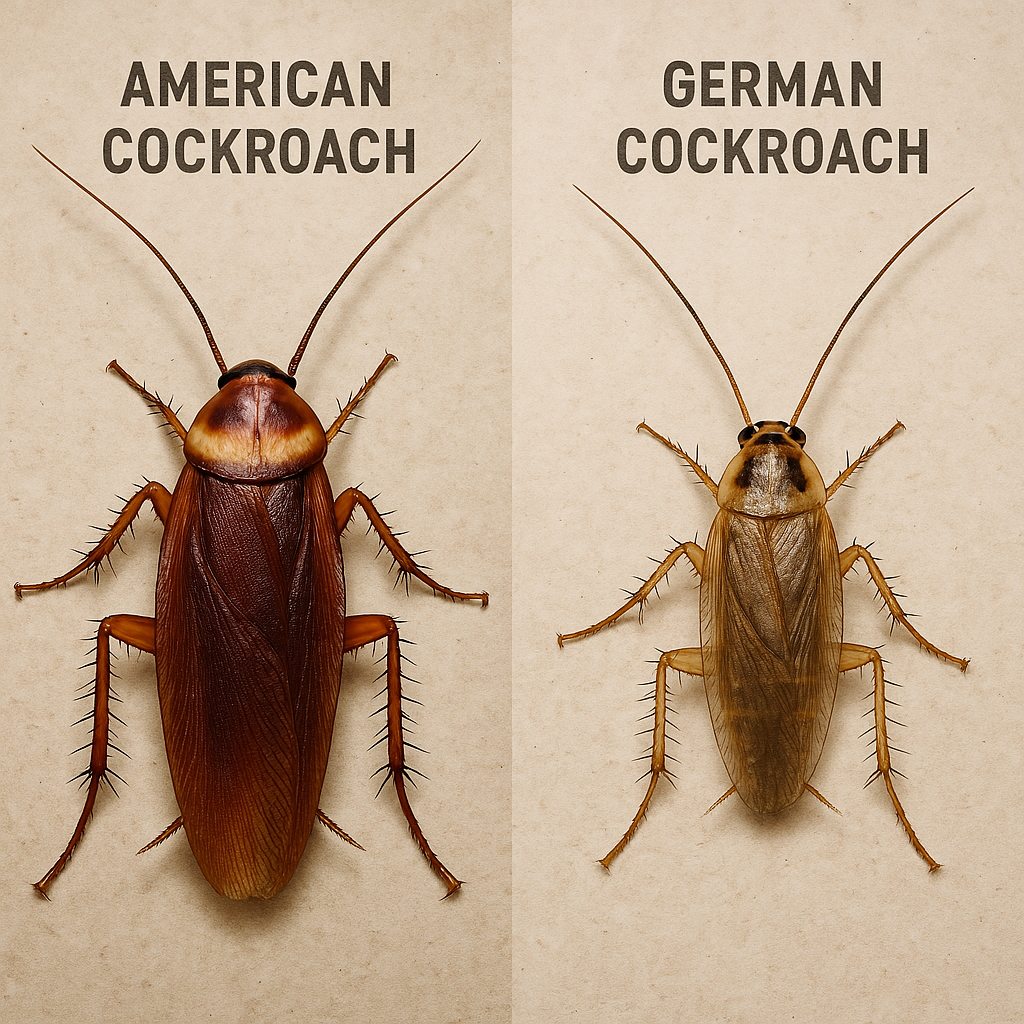How Big Can Rats Get?

With over 60 recognized rat species, these rodents vary significantly in size and habitat preferences. The size of a rat can be quite telling of its species and living conditions, as factors like available food supply profoundly impact their growth. Interestingly, many rats have long tails that grow even longer than their bodies which add significant length to their distinctive physical characteristics. Among the different types, the black rat and the brown rat are perhaps the most commonly encountered by humans. However, other species such as marsh rats and pack rats also share our environment, each with unique traits and size ranges that reflect their adaptation to diverse ecosystems around the world.
Size Comparison of Common Rat Species
| Rat Species | Avg Body Length | Avg Tail Length | Avg Weight |
|---|---|---|---|
| Black Rats | 5 – 7.5 inches | 6 - 9 inches | .15 - .5 pound |
| Brown Rats | 7 - 10 inches | 5 - 9 inches | .6 - 1 pound |
| Dumbo Rats | 9 - 11 inches | 7 - 9 inches | .75 - 1.5 pounds |
| Gambian Pouched Rats | 15 - 17 inches | 14 - 17 inches | 3 - 4 pounds |
| Hairless Rats | 9 - 11 inches | 7 - 9 inches | .75 - 1.5 pounds |
| Marsh Rats | 6 - 8 inches | 5 - 7 inches | .4 - .6 pound |
| Pack Rats | 6 - 7 inches | 6 - 7 inches | .5 - 1 pound |
| Rex Rats | 9 - 11 inches | 7 - 9 inches | .75 - 1.5 pounds |
How Big Do Rats Get in the Wild?
When shifting focus from the domesticated companions found scurrying within the safety of our homes, we encounter wild relatives whose sizes and habits vary significantly. Wild rat species are often recognized as invasive species because they are known for their tenacity in thriving in diverse and often challenging environments.
How Big Do Brown or Norway Rats Get?
The brown rat, also known as the Norway rat, carries the scientific names Rattus norvegicus. Contrary to what their name suggests, brown rats are originally from China, and they normally sport coats of brown or dark grey fur. They managed to cross the seas in boats and are now widely distributed across the United States and Canada. The average adult brown rat is a robust household pest that can tip the scales at 10 ounces or more. They possess a stout body that includes a shorter tail that can reach almost 20 inches combined.
Adult brown rats are formidable due to their sizeable physique and tendency to live and thrive underground by creating intricate burrow systems. They can live up to two years, which provides ample time for them to grow into large rodents. These rats are commonly found in less-than-savory conditions such as garbage dumps and sewers which are areas abundant in food waste that support their growth. The largest recorded brown rat measured an astonishing 21 inches from nose to tail tip. This pushed the upper size limit of this species which is physiologically capped at around two pounds.
How Big Do Black or Roof Rats Get?
The black rat, also known as the Roof Rat or house rat, is a smaller relative within the rodent family. Typically, an adult black rat's body length ranges from 5 to 7.5 inches, not accounting for its tail. Black rats’ tails are typically just slightly longer than their bodies which results in black rats reaching lengths between 11 – 18 inches long. These rats may be smaller than brown rats, but their size is more suited for their movement. Roof rats originally evolved to live in trees which resulted in this species having excellent agility. These excellent climbers used their propensity to climb to reach elevated hiding places like attics, eaves, and roofs which is how they earned the nickname “roof rat.”
While the name 'Black Rat' suggests a single color form, these creatures actually exhibit various shades, including hues of light brown. Once vilified as the spreaders of the bubonic plague, contemporary views on Black Rats have shifted to recognize them as invasive pests that can wreak havoc in new environments. Not only do they potentially carry disease, but they can also have a significant impact on native wildlife and ecosystems.
How Big Do Marsh Rats Get?
Marsh rats are a smaller North American native species predominantly found in the wetland regions of the southeastern United States. They are roughly the same size as black rats with similar body lengths but with a shorter tail. This results in marsh rats being between 11 – 15 inches long. The coloration of their fur can range from grayish brown to a reddish hue which is attributed to the habitats they occupy within the marshes.
How Big Do Pack Rats Get?
Pack rats are commonly referred to as woodrats and they are native to the diverse landscapes of North America. They can be found spanning the western United States, Canada, and northern Mexico. While there are several species within the pack rat family, they generally share a consistent size, weighing in at around 9.5 ounces on average and reaching lengths between 12 – 14 inches long.
These rats are notorious for their tendency to gather a variety of materials, ranging from natural debris to man-made objects, which earned them the name “pack rats.” These collected items are often incorporated into their elaborate nests. Unfortunately, pack rats tend to nest in places where electrical wiring and insulation is abundant which can result in serious damage and create potential hazards.
What Factors Impact a Rat’s Size?
The size of a rat is not solely a matter of species, it can also be influenced by several factors that play a pivotal role in determining the size of these nuisance pests. Genetics lay the foundation by encoding potential size and growth patterns, while age marks the timeline of development that allows rats to reach their predetermined sizes. Intra-species competition can spur growth as individuals vie for dominance and breeding rights, whereas the availability of resources such as food and shelter directly affect growth and health. Predation pressures can influence size too, with predators culling rats before they are able to reach their full size potential. The sex of the rat is another determinant, as sexual dimorphism often results in size discrepancies between males and females. Lastly, the environment shapes the physical development of rats which makes size a dynamic indicator of a rat’s adaptation and survival capabilities.
Genetics
Genetics play a fundamental role in the size of a rat because it serves as the blueprint from which all physical attributes derive. Inherited traits passed down from one generation to the next dictate not just the color and texture of their fur, but also the potential for how large a rat can grow. Each species of rat carries a unique genetic code that defines the parameters of its size range. These inherent genetic factors are the starting line that determine the limits and extents of a rat’s growth.
Age
Age is a crucial factor in the size a rat can achieve, with their relatively brief lifespans in the wild often capping their potential for growth. Typically, a wild rat's life ranges from 12 to 18 months, which constrains the time they have to grow. The journey to reach full size takes about seven months, leaving just 5 to 11 months for any further growth beyond what is considered 'normal' for an adult. This brisk lifecycle means that encountering exceptionally large rats is an uncommon event because most individuals simply do not have the lifespan required to grow significantly larger than the average for their species.
Competition
In the world of rats, life is characterized by relentless competition which is a byproduct of their tendency to coexist in densely populated colonies. As they vie for the essentials like food, territory, shelter, and mates, their existence becomes a relentless struggle for survival and dominance. Not all rats emerge victorious, and many sustain injuries that can lead to disease, infections, or fatal encounters with their own kind. This continuous battle not only influences their social structure but also acts as a natural check on their size. With resources being limited, only the strongest and most resilient rats manage to secure enough to grow larger than average, while others may succumb to the harsh realities of their competitive environment before reaching their full size potential.
Resources
Access to resources like food fundamentally dictates the potential size a rat can achieve. Rats typically consume about 20 grams of food daily, but they face significant challenges in terms of growth due to their high-energy lifestyles and limited caloric intake. A rat's diet during its crucial growth periods heavily influences its ability to attain its maximum genetic size. Diets rich in protein are particularly critical, as proteins are essential for the development of tissues and muscles. Rats that have access to a varied and abundant supply of nutritious food are much more likely to develop to the upper limits of their size range, whereas those with restricted access to quality food sources often exhibit stunted growth.
Predation
Predation exerts a significant influence on the size and life expectancy of rat populations. Rats are creatures near the bottom of the food chain, so they are frequent targets by a variety of predators including foxes, cats, dogs, birds, and even humans. This constant threat from higher trophic levels naturally limits the opportunity for rats to reach larger sizes or older ages. Predators not only reduce the number of individual rats through direct consumption, but their presence can also cause chronic stress among surviving rats, which affects their growth and overall health. Thus, predation plays a dual role in impacting their size by removing the genetically larger or weaker individuals and by creating an environment where only the quickest and most adaptable survive.
Sex
Sexual dimorphism is the distinct difference in size between males and females. This plays a notable factor affecting the overall size of rats. Typically, male rats grow significantly larger than their female rat counterparts. For instance, while a male rat of a certain species can weigh up to 800 grams, females of the same species may only reach up to 500 grams. The larger size of males is advantageous in mating competitions because it allows them to dominate smaller rivals and thus, enhance their reproductive success. This biological differentiation in size based on sex ensures that the most physically imposing males have better odds of passing on their genes which influences the evolutionary trajectory of their populations.
Environment
The environment plays a crucial role in shaping the size of rat populations, with urban and rural settings providing distinctly different challenges and opportunities. In urban areas, rats often benefit from the abundance of human trash, which provides a steady, nutrient-rich food source. This accessibility to food can lead to larger body sizes as urban rats face fewer constraints on their growth. Conversely, rats in rural environments might not have such luxuries. They often face stiffer competition for food, more visibility to predators, and limited resources. This scarcity can limit their growth potential and result in generally smaller sizes compared to their urban counterparts.
Why Does Size Matter?
Size plays a crucial role in the survival and behavioral dynamics of rats that influence everything from social hierarchy to interaction with human environments. In rat communities, larger rats typically assert dominance over smaller ones, which can affect access to resources like food and shelter. These size-related differences also extend to behavior. For example, larger male rats often exhibit more bold and aggressive behaviors, whereas smaller rats may be more cautious and elusive.
The physical size of a rat can also directly impact how it interacts with human spaces. Despite their ability to squeeze through surprisingly small openings, larger rats may need to force their way into homes by widening gaps with their teeth or claws. This not only facilitates easier access but also increases the likelihood of noise and noticeable signs of infestation. Understanding these aspects of rat behavior linked to size can enhance efforts in pest control, allowing for more targeted and effective management strategies to mitigate the challenges posed by these adaptable and often unwelcome guests.
What are the Largest Rat Species Around the World?
Around the world, there are several rat species known for their impressive sizes that far exceed those of the more commonly encountered roof, brown, or marsh rats. These larger species stand out not only for their physical dimensions but also for their unique adaptations to their environments. Some of the largest known rat species include:
- Gambian Pouched Rat: Known for its significant size, the largest recorded Gambian Pouched Rat just under three feet long and weighed three pounds.
- Northern Luzon Cloud Rat: This species from the Philippines boasts a body length of 2.5 feet and a weight of 5.7 pounds, making it one of the heaviest of the rat species.
- Sumatran Bamboo Rat: Found in Southeast Asia, this rat reaches lengths of 1.6 feet and can weigh up to 8.8 pounds.
- Bosavi Woolly Rat: Discovered in the crater of Mount Bosavi in Papua New Guinea, this rat can grow up to 32 inches long and weigh 3.5 pounds.
Contact EcoGuard Pest Management if You Are Dealing with Rats
If you are encountering issues with rats, EcoGuard Pest Management is here to help. Our experienced team is equipped with the knowledge and tools necessary to effectively manage and eliminate rat infestations and ensure your home or business remains safe and pest-free. Don’t let rats disrupt your life. Contact EcoGuard Pest Management today to learn more about our services and how we can assist you in resolving your rat-related concerns promptly and efficiently.
Rat Size FAQs
What is the biggest size of a rat?
The largest rat ever recorded is the Bosavi woolly rat, discovered in Papua New Guinea, which can reach a size of up to 32 - 34 inches from the tip of its nose to the end of its tail and weigh about 3.5 pounds. This species lives in a very isolated area within the crater of Mount Bosavi, an extinct volcano, and is known for its sizable build and dense, silver-gray coat. Such large sizes are exceptionally rare among rat species worldwide.
Do giant rats exist?
Giant rats do exist, but they are extremely rare and typically found only in specific regions. The Bosavi woolly rat, for example, was discovered in Papua New Guinea and can grow up to 32 inches in length and weigh as much as 3.5 pounds. These larger species are uncommon and generally inhabit isolated ecological niches.

















